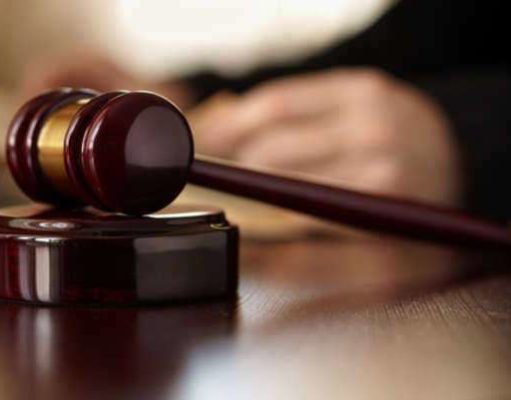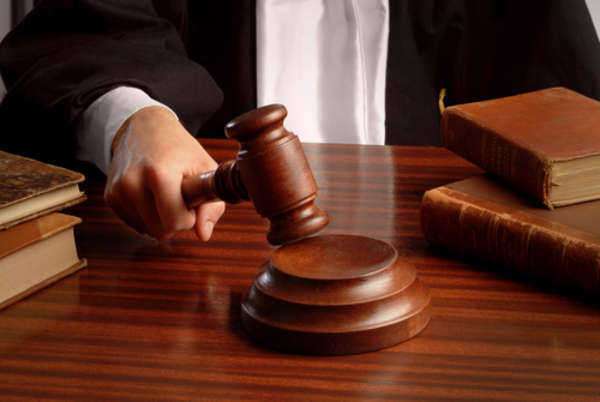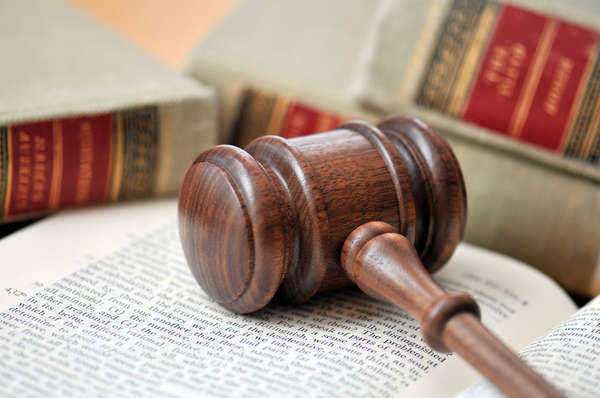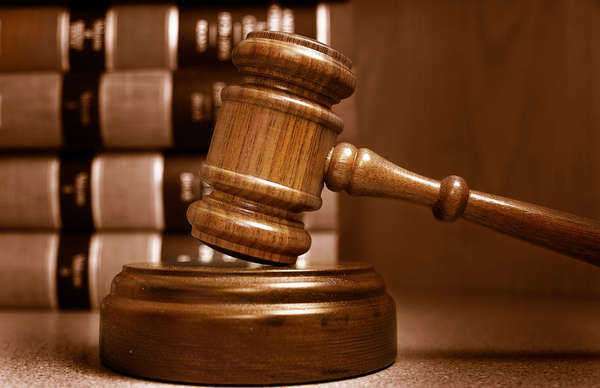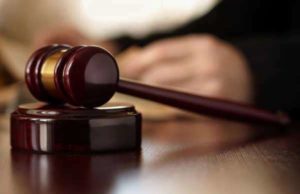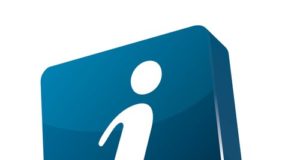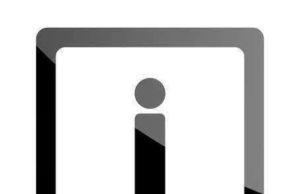John Paul Stevens
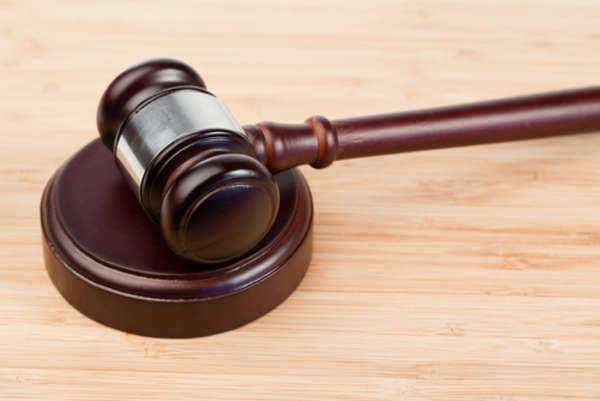
Supreme Court Justice: John Paul Stevens
John Paul Stevens was an Associate Justice of the United States Supreme Court between December 19, 1975 and his retirement in June 29, 2010. Upon his retirement, John Paul Stevens was the oldest member of the Supreme Court and the third-longest serving associate justice in the history of the Court. John Paul Stevens was nominated by President Gerald Ford in 1975. After being confirmed by the Senate Stevens and he took his seat in the Supreme Court December 19, 1975, after being confirmed 98–0 by the Senate.
As a Supreme Court Justice, John Paul Stevens was considered to be a liberal justice in the Court. When he first began his tenure on the Supreme Court, John Paul Stevens had held relatively moderate positions in his opinions. But when he was in the conservative Rehnquist Court, Justice John Paul Stevens joined the liberal Justices on many issues such as federalism, gay rights, and abortion rights.
Famous Cases
Regents of the University of California v. Bakke (1978): A landmark decision of the United States Supreme Court which ruled that the admission process of the University of California at Davis Medical School, which put aside 16 of the 100 available seats for African American students was unconstitutional. The justification of “diversity in the classroom” for looking at race as a factor in the school’s admissions policies was not the same in comparison to the original purpose stated by the school, whose admissions program that was under review was designed to ensure the admissions of minorities that were traditionally discriminated-against. UC Davis Medical School developed the program originally to decrease the historic deficit of conventionally disfavored minorities in the medical profession and in medical schools, fight against the effects of societal discrimination, increase the amount of physicians who would practice in communities that were currently underserved, and receive the educational benefits that result from a student body that is ethnically diverse.
Justice Paul Stevens wrote a plurality opinion which did not concur with the majority’s assertion that race could be a factor among many different ones when looking at admissions, but it did agree with the opinion that stated that the special admissions program excluded Bakke due to his race, which was unconstitutional. Justice Paul Stevens’ plurality also agreed with the point in Powell’s opinion that said that UC Davis was required to admit Bakke into the class.
Grutter v. Bollinger (2003): A Supreme Court case where the court upheld the affirmative action admissions policy set by the University of Michigan Law School in a 5-4 decision. When the University of Michigan Law School denied admission to Grutter, a Michigan resident who had a 3.8 GPA and a LSAT score of 161 LSAT, Grutter alleged that the school had discriminated against her race, which was in violation of Civil Rights Act of 1964 (Title VI), the Fourteenth Amendment, along with 42 U.S.C. § 1981. Grutter claimed that was rejected from the school due to the school’s use of race as a predominant factor which gave certain minority groups a significantly higher chance of admission and that the respondents did not have a compelling interest to justify using race.
The District Court found the use of race in the school’s admission process to be unlawful, but the Sixth Circuit reversed that decision. The Supreme Court upheld the Sixth Circuit’s reversal, and upheld the University’s admissions policy.
Justice John Paul Stevens was a part of the Court’s majority opinion, which stated that the U.S. Constitution did not explicitly prohibit the school’s narrowly tailored use of race to promote a compelling interest in attaining the educational benefits that occur from having a diverse student population. The Supreme Court felt that the law school’s desire to achieve a critical mass of minority students did qualify as a tailored use. The majority opinion also suggested that in future cases, racial affirmative action should no longer be necessary and therefore no longer be allowed. This decision mostly upheld the position in the case University of California v. Bakke, where Justice Powell allowed race to be a factor in admissions policy, although quotas were illegal.
Texas v. Johnson (1989): A landmark decision by the United States Supreme Court which invalidated prohibitions regarding desecrating the American flag which was enforced in 48 of the 50 states.
This case revolved around Gregory Lee Johnson, a former member of the Revolutionary Communist Youth Brigade, who participated in a political demonstration in Dallas, Texas during the Republican National Convention of 1984, which protested some policies of the Reagan Administration as well as some companies in Dallas. A demonstrator gave Johnson an American flag which was stolen from a targeted building. Once the protesters arrived at Dallas City Hall, Johnson drenched the flag with kerosene and set it on fire. While no one was injured, some claimed to be extremely offended.
Johnson was charged with breaking the Texas law that prohibited the desecration of a venerated item. He was convicted, fined, and sentenced to a year in prison. The Court of Criminal Appeals in Texas saw the case through an appeal and overturned the conviction, saying that the State did not have the power to could not punish him for burning the flag since it was protected under the First Amendment as symbolic speech. However, the State of Texas claimed that its interests were more important than the symbolic speech rights because the state wished to preserve the national flag as a symbol of national unity while maintaining order, but the court stated that neither of these could justify the conviction. The State asked the U.S. Supreme Court to hear the case. The opinion of the court was a controversial 5-4 decision, with Justice Thurgood Marshall being a part of the majority.
The Court first looked at whether the First Amendment could include non-speech acts and, if so, if flag burning was included. The court found that in this case, the flag burning constituted as expressive conduct, allowing Johnson the protecting under the First Amendment. The court also found that there was no disturbance of the peace due to the flag burning, and rejected the States claim that the flag burning was to incite breaches of the peace. The last issue was if the states had a legitimate interest in preserving the national flag as a symbol of principles and national identity. However, the majority found that the lack of evidence for Constitutional support regarding flag burning, so the Court concluded that it was protected under the first amendment.
Justice John Paul Stevens wrote a strongly dissenting opinion, which argued that the American flag was a symbol of freedom, of religious tolerance, of equal opportunity, and of good will for others who share the same aspirations and that value of the American flag as a symbol is not measurable. Justice John Paul Stevens concluded that the case at hand has nothing to do with having disagreeable ideas, but rather involved disagreeable conduct that which diminished the value of an important asset of the country and that Johnson was not punished for his opinion, but rather the way he expressed it.
United States v. Morrison (2000): is a decision made by the Supreme Court that stated that sections of the Violence Against Women Act (1994) were unconstitutional because the act passed by Congress exceeded congressional power under the Commerce Clause as well as under Section 5 of the Fourteenth Amendment to the Constitution. This act that was originally passed contained a provision regarding federal civil remedies for gender-based violence victims, even in cases where no charged were filed. The case revolved around an incident at Virginia Tech where a freshman student was allegedly assaulted and raped by members of the football team. One of the students admitted to having sexual contact with the student despite her protests. The college initially punished the student, but it was later struck down by the school administration. The Supreme Court affirmed the Fourth Circuit Court’s decision to support the U.S. District Court’s opinion that Congress had exceeded their power under the Constitution. Justice John Paul Stevens was a part of the dissent opinion which argued that enacting the Violence Against Women Act was within the powers of Congress as allowed in the Commerce Clause. The dissent also stated that the majority opinion had looked over an old and discredited understanding of the Commerce Clause. Justice Breyer, who was joined by Justice John Paul Stevens, Ginsburg, and Souter, also argued that it was mainly the responsibility of the United States Congress, and not the courts, to set limits on Congressional power under the Commerce Clause. Joined by Justice John Paul Stevens, Justice Breyer also stated that Congress had been very sensitive to issues of federalism when they enacted the Violence Against Women Act, and they had expressed doubts about the majority’s conclusions regarding the Fourteenth Amendment.
Bush v. Gore (2000): A landmark Supreme Court decision on December 12, 2000, that resolved the controversy of the 2000 presidential election in favor of G.W. Bush. Eight days before, the U.S> Supreme Court had decided unanimously the related case of Bush v. Palm Beach County Canvassing Board (2000) and three days before that, had preliminarily stopped the recount that was happening in Florida. The Court ruled in a per curiam decision that the Florida Supreme Court’s technique for the ballot recount violated the Fourteenth Amendment’s Equal Protection Clause. The Supreme Court also ruled that no other method could be made within the time limits that were created by Florida State.
Four justices including Justice John Paul Stevens dissented and did not feel the recount should have been stopped. Justice John Paul Stevens’ dissent, which was joined by Justices Ginsburg and Breyer concluded that the petitioners’ federal assault on the election procedures in Florida had an underlying lack of confidence in the capacity and impartiality of the state judges that would make critical decisions if the count were to continue.
Hamdan v. Rumsfeld (2006): A Supreme Court case in which the Court held that military commissions that were set up by the Bush administration in order to try detainees at Guantanamo Bay lacked the power to process due to the fact that the procedures and structures violated the Uniform Code of Military Justice as well as the four Geneva Conventions which were signed in 1949.
The case looked at whether Congress could pass legislation to prevent the Supreme Court from taking the case of an accused combatant prior to his military commission takes place. The case also would determine if the special military commission that had been created violated federal law, and whether courts could enforce the 1949 Geneva Convention. The Court issued a 5-3 decision on June 29, 2006 which held that the court had jurisdiction and that President Bush did not have the proper authority to set up special military commissions without approval from Congress since they did not follow the Geneva Convention and the Uniform Code of Military Justice and that the war crimes tribunals also violated the laws as well.
Justice John Paul Stevens was the author of the Supreme Court’s majority in part opinion. Justice John Paul Stevens began the opinion by looking at the issue of jurisdiction. Justice Stevens denied the United States ‘s motion to dismiss under the Detainee Treatment Act of 2005, which gave the District of Columbia Circuit Court of Appeals the exclusive jurisdiction to look over decisions of cases held in military commissions. However, the act did not have language that would suggest that the Supreme Court’s review would be excluded. Because the military commission did not meet the necessary requirements of the Geneva Convention or the Uniform Code of Military Justice, the commission violated the laws of war thus could not be used to.

